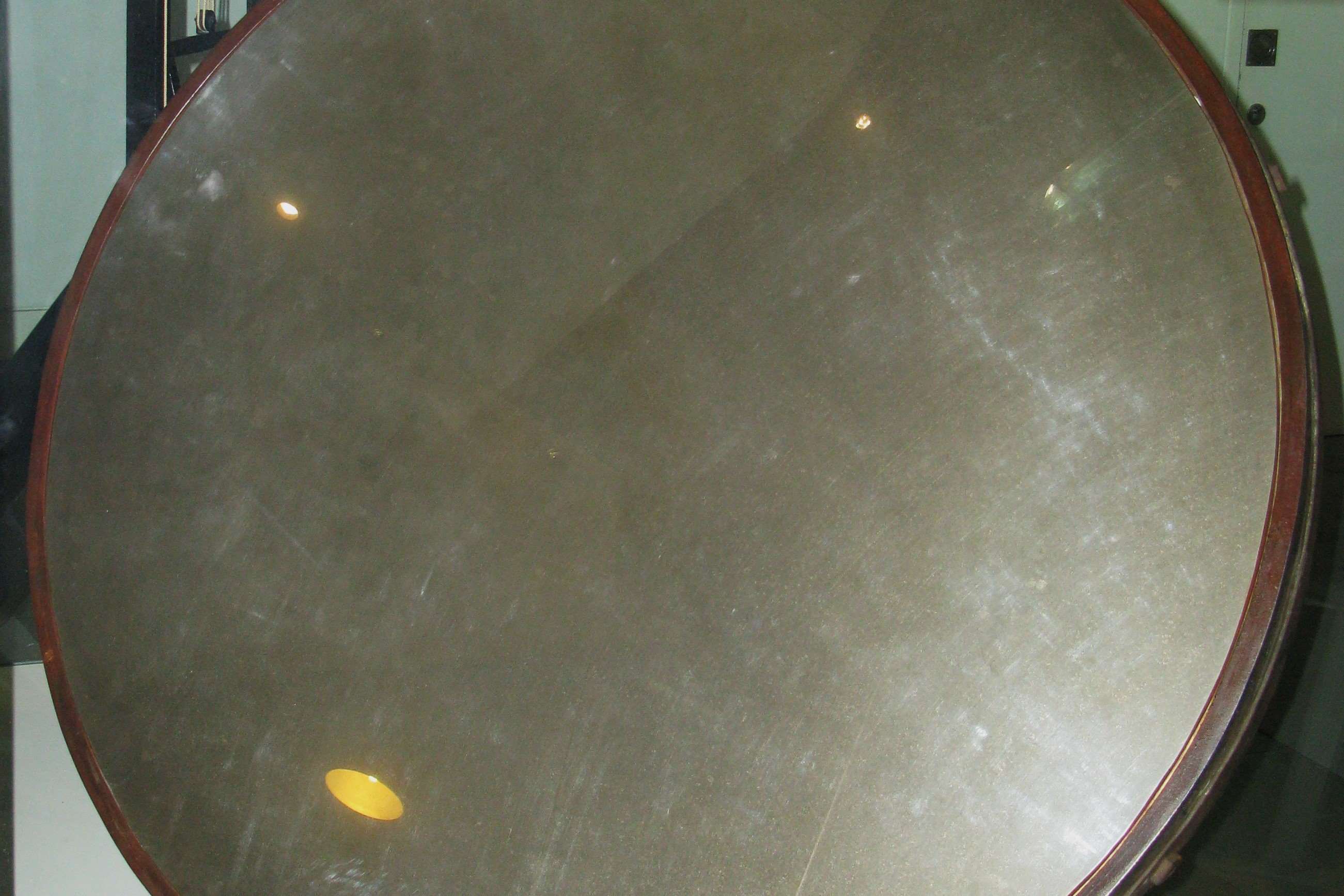
Speculum metal is a fascinating alloy with a rich history and unique properties. Made primarily of copper and tin, this shiny, reflective material was once the go-to choice for crafting telescope mirrors before modern advancements. Imagine peering into the night sky through a telescope made of this gleaming metal! Its high reflectivity and durability made it invaluable for astronomers of the past. But speculum metal isn't just for stargazing. It also found uses in decorative arts, adding a touch of brilliance to various artifacts. Curious about how this alloy has shaped both science and art? Let's dive into 40 intriguing facts about speculum metal!
Key Takeaways:
- Speculum metal, an ancient alloy of copper and tin, was used for mirrors and telescopes. It had unique reflective properties but was challenging to work with due to brittleness and oxidation.
- While speculum metal has been largely replaced by modern materials, it played a significant role in early scientific instruments and continues to be a fascinating part of history and popular culture.
What is Speculum Metal?
Speculum metal is a fascinating alloy primarily made of copper and tin. It has a shiny, reflective surface and has been used for various purposes throughout history. Let's dive into some intriguing facts about this unique material.
-
Ancient Origins: Speculum metal dates back to ancient civilizations, including the Greeks and Romans, who used it for making mirrors.
-
Composition: Typically, speculum metal consists of about 67% copper and 33% tin. This specific ratio gives it its reflective properties.
-
Reflectivity: Unlike modern mirrors, which use silver or aluminum, speculum metal mirrors reflect only about 66% of the light.
-
Telescope Mirrors: In the 18th and 19th centuries, speculum metal was widely used for making telescope mirrors due to its ability to be polished to a high shine.
-
Hard to Polish: Polishing speculum metal is a labor-intensive process. It requires meticulous effort to achieve the desired reflective surface.
Historical Uses of Speculum Metal
Throughout history, speculum metal has been used in various applications, from scientific instruments to decorative items. Here are some notable uses.
-
Astronomical Instruments: Early astronomers like William Herschel used speculum metal for their telescopes, making significant discoveries.
-
Decorative Items: In ancient times, speculum metal was also used to create decorative objects, including jewelry and ornamental pieces.
-
Medical Instruments: The alloy was sometimes used in the making of medical instruments due to its durability and ease of sterilization.
-
Optical Devices: Speculum metal was employed in the construction of early optical devices, including microscopes and other scientific tools.
-
Reflecting Telescopes: John Hadley, an English mathematician, improved the design of reflecting telescopes using speculum metal mirrors in the early 18th century.
Challenges in Working with Speculum Metal
Despite its usefulness, working with speculum metal presents several challenges. Here are some of the difficulties faced by craftsmen and scientists.
-
Brittleness: Speculum metal is quite brittle, making it prone to cracking during the casting and polishing processes.
-
Oxidation: The alloy is susceptible to oxidation, which can tarnish its reflective surface over time.
-
Weight: Speculum metal is relatively heavy, which can be a disadvantage in applications where weight is a critical factor.
-
Casting Difficulties: Achieving a flawless cast with speculum metal is challenging due to its tendency to form bubbles and inclusions.
-
Maintenance: Maintaining the reflective surface of speculum metal requires regular polishing and careful handling to prevent scratches and tarnishing.
Modern Alternatives to Speculum Metal
With advancements in materials science, modern alternatives have largely replaced speculum metal in many applications. Here are some of the materials that have taken its place.
-
Aluminum: Modern telescope mirrors often use aluminum coatings, which are lighter and more reflective than speculum metal.
-
Silver: Silver-coated mirrors provide higher reflectivity and are easier to produce and maintain.
-
Glass: Optical glass has replaced speculum metal in many optical devices due to its superior clarity and ease of manufacturing.
-
Plastic: In some applications, plastic mirrors are used for their lightweight and shatter-resistant properties.
-
Coated Mirrors: Advanced coatings, such as dielectric coatings, have improved the performance and durability of modern mirrors.
Interesting Facts About Speculum Metal
Here are some additional fascinating tidbits about speculum metal that highlight its unique properties and historical significance.
-
Herschel's Discovery: William Herschel discovered the planet Uranus using a telescope with a speculum metal mirror in 1781.
-
Historical Artifacts: Some ancient speculum metal mirrors have been found in archaeological sites, providing insight into early metallurgical techniques.
-
Reflective Art: Artists have used speculum metal to create reflective sculptures and installations, taking advantage of its unique properties.
-
Scientific Legacy: The use of speculum metal in early scientific instruments paved the way for many astronomical discoveries and advancements.
-
Restoration Projects: Some historical telescopes with speculum metal mirrors have been restored and are still in use today for educational purposes.
Speculum Metal in Popular Culture
Speculum metal has even made its way into popular culture, appearing in various forms of media and entertainment. Here are some examples.
-
Literature: Speculum metal is mentioned in several historical novels, often highlighting its use in scientific instruments.
-
Movies: Some period films feature characters using speculum metal mirrors, adding authenticity to the historical settings.
-
Museums: Many science and history museums display speculum metal artifacts, showcasing their significance in technological advancements.
-
Television: Documentaries about the history of astronomy often discuss the role of speculum metal in early telescopes.
-
Art Exhibitions: Contemporary artists sometimes use speculum metal in their works, exploring its reflective properties and historical context.
Fun Facts About Speculum Metal
Let's wrap up with some fun and quirky facts about speculum metal that you might not know.
-
Ancient Beauty: In ancient Rome, women used speculum metal mirrors as part of their beauty routines.
-
Scientific Rivalries: The use of speculum metal in telescopes sparked rivalries among early astronomers, each vying to build the best instrument.
-
Space Exploration: Some early space telescopes used speculum metal mirrors before more advanced materials became available.
-
Historical Recipes: Historical texts contain detailed recipes for making speculum metal, reflecting the metallurgical knowledge of the time.
-
Reflective Jewelry: Some ancient cultures crafted reflective jewelry from speculum metal, believing it had magical properties.
-
Museum Pieces: Speculum metal artifacts are prized pieces in many museum collections, often displayed alongside other historical scientific instruments.
-
Educational Tools: Restored speculum metal telescopes are sometimes used in educational programs to teach students about the history of astronomy.
-
Artistic Inspiration: The unique properties of speculum metal have inspired artists to create works that play with light and reflection.
-
Historical Reenactments: Historical reenactors often use speculum metal mirrors to add authenticity to their portrayals of ancient and medieval life.
-
Cultural Significance: Speculum metal holds a special place in the history of science and technology, symbolizing the ingenuity and craftsmanship of early metallurgists and astronomers.
The Final Word on Speculum Metal
Speculum metal, a fascinating alloy, has played a crucial role in scientific advancements. Its unique properties, like high reflectivity and durability, made it indispensable in early telescopes and microscopes. This metal, an alloy of copper and tin, was once the go-to material for creating precise optical instruments. Though modern materials have largely replaced it, speculum metal's historical significance can't be overstated. It paved the way for many discoveries in astronomy and microscopy. Understanding its composition and uses gives us a glimpse into the ingenuity of past scientists and engineers. So, next time you look through a telescope or microscope, remember the humble beginnings with speculum metal. It’s a testament to human innovation and the relentless pursuit of knowledge.
Frequently Asked Questions
Was this page helpful?
Our commitment to delivering trustworthy and engaging content is at the heart of what we do. Each fact on our site is contributed by real users like you, bringing a wealth of diverse insights and information. To ensure the highest standards of accuracy and reliability, our dedicated editors meticulously review each submission. This process guarantees that the facts we share are not only fascinating but also credible. Trust in our commitment to quality and authenticity as you explore and learn with us.


